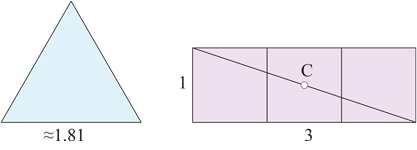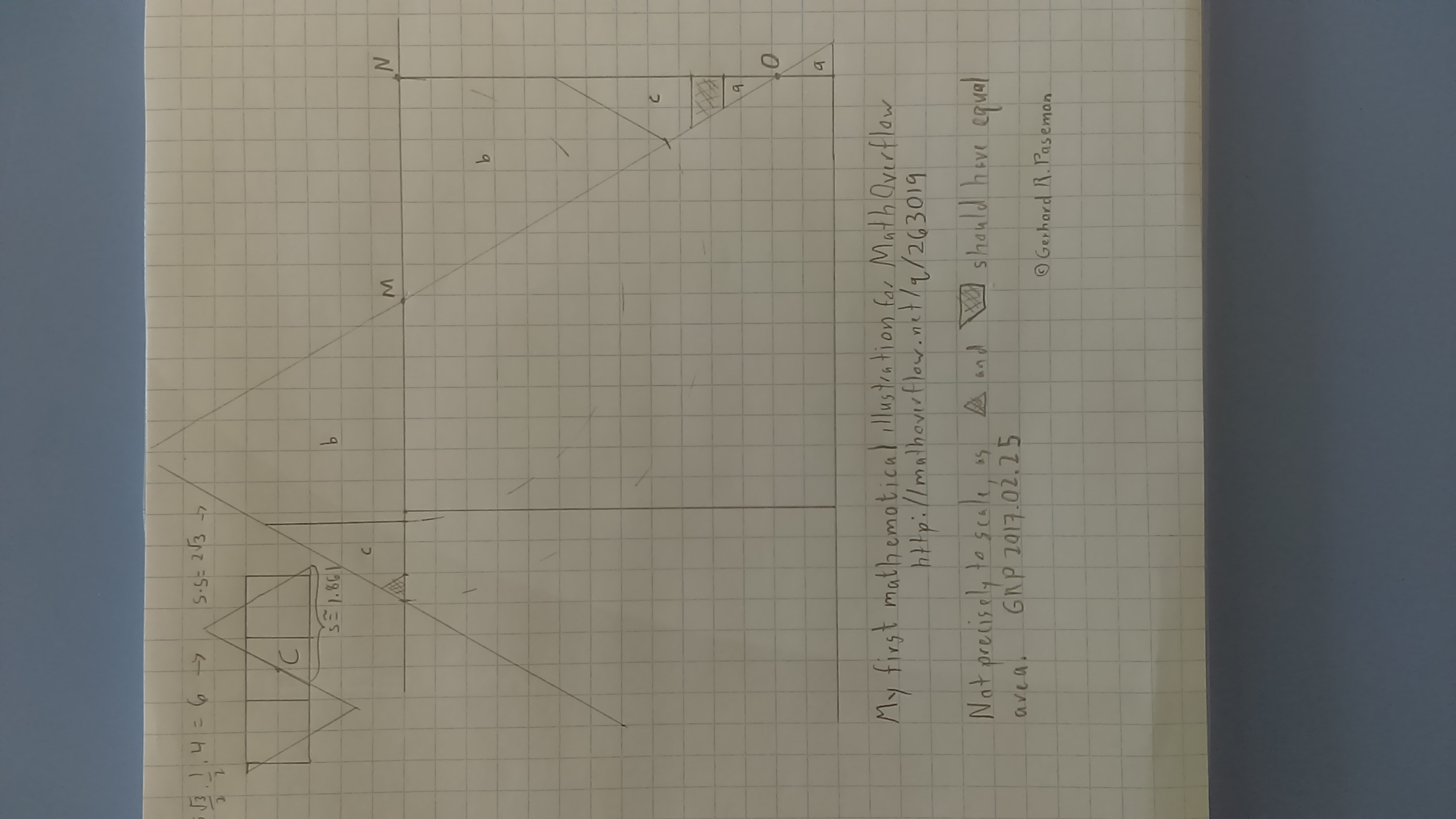I think a good solution starts with rearranging two triangles into a 3 by 1 rectangle of the same area. In particular, start symmetrically: find the center $C$ of the rectangle, and align one of the triangles so it has an edge aligned with side of length 3 and $C$ is on its perimeter. Do a $180^\circ$ rotation to align the other triangle similarly. You now have the center square decomposed in 2 pieces, and a large portion of a triangle devoted to one of the remaining squares.
[![GPTetraCube1][1]][1]

(Added by JORourke.)
You now have the problem of rearranging two triangular pieces into the gap in the unfilled portion of the square which is a right triangular piece of similar shape. I suspect this corner portion can be done with 5 or fewer pieces, given a total for this half of 14, assuming the rectangle needs to be cut.
You can also offset this construction slightly, getting rid of one of the triangle snippets by covering it with the rectangle. This might reduce the piece count a bit.
Edit 2017.02.25 GRP Here is my first attempt at including an image representing part of the dissection. The main task is to assemble right triangle MNO from an equilateral triangle with one vertex at M and a snippet outside of MNO but sharing a vertex with O. I've started such a process, but I believe Joseph knows a more efficient way. Enjoy the picture.
End Edit 2017.02.25 GRP
Gerhard "Leaves The Illustrating To You" Paseman, 2017.02.24.
[1]: https://i.sstatic.net/IUy6R.jpg
